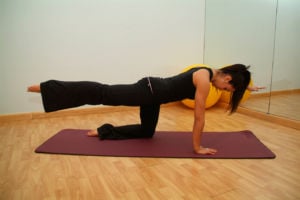People seek physiotherapy if they experience any type of injury or accident. Physiotherapy is part of the treatment plan that helps with the recovery and reduces pain and swelling. The aim of physical therapy is to bring back flexibility and strength to the affected part of the body. Hence, many doctors recommend physiotherapy after a patient has gone through any injury or surgery.
Along with helping people heal, physiotherapy can also prevent injuries. If you are training for a specific sport where you use the same muscles or if you are doing certain repetitive tasks that are putting a strain on a particular area of your body, it can cause injuries. These injuries can cause pain, stiffness, cramps, and discomfort. Physiotherapy treatment can help with injury prevention for people who do any form of repeated activities. In this article, we will look at how physiotherapy can help people with preventing injuries.
Common Types Injuries
Injuries can occur due to various physical activities during exercise or while playing any type of sport. This usually happens when a person overtrains, uses improper techniques, or does not warm up. All these factors can increase the risk of injuries.
Here are some common types of injuries that can occur during vigorous physical activities.
Pulled Muscle
Muscle strain or pulled muscle occurs when a muscle is overstretched and tears. This can lead to symptoms such as pain, swelling, stiffness and tenderness. Minor muscle strain can be resolved with the RICE method which is rest, ice, compression, and elevation. You can also take medicines to manage pain. However, severe muscle strain needs medical attention.
Shin Splints
Shin splint symptoms include throbbing or stabbing pain on the insides of the lower leg. This is a repetitive use injury that can occur in runners or people who are beginning exercise. Pain begins when the muscles and tendons around the tibia, which is the larger of the two lower leg bones, become inflamed. Resting, stretching, and applying ice can relieve shin splints.
Sprained Ankle
Sprained ankle is caused when the ligaments supporting the joint become overstretched. Ankle sprains can occur when playing sports or any other physical activities. Sprains can be minor or severe. Severe sprains require medical attention and take many weeks to heal.
Tennis Elbow
This is an overuse injury that can happen when playing racket sports or any other repetitive work. Tennis elbow is the inflammation of the tendons on the outside of the elbow due to small tears. This can cause pain in the elbow along with a weak grip.
Lower Back Injuries
Lower back is prone to injuries due to overuse. Rigorous physical activities or heavy lifting can put a strain on the back area. Even sitting for a longer period can cause lower back pain. This can lead to pain, discomforts and reduced movement that can stop a person from doing their everyday activities.
Achilles Tendonitis
It is an inflammation that causes pain in the lower back of the leg just above the heel. This area can become swollen and stiff. The pain can intensify with physical activities. In some cases, it can also cause bone spurs which are bony projections that develop along the edges of the bone.
Runner’s Knee
This is a condition that is caused when the tendons, joint lining or other soft tissues of the knee become irritated. It is another condition caused by overuse. Along with pain it can also cause popping and cracking in the knee area.
How Physiotherapy Can Help Prevent Injuries
Physiotherapy can help deal with injuries by restoring strength and mobility to the affected part of the body. In addition, it can also help prevent future injuries. A physiotherapist can help come up with a plan to prevent future injuries for athletes or people who do daily exercises or any other physical activities. They will examine your lifestyle, medical history, or any previous injuries to come up with a plan for you.
A physiotherapist can identify the common injuries that you are susceptible to when playing a particular sport or doing any repetitive movements. Based on this they can provide various recommendations to help you avoid these overuse injuries.
The various types of treatments or therapies can include the following:
Education: Physiotherapists can educate the patients about their injuries and underlying causes of it. They can recommend exercises, treatments or therapies that can aid any present injuries or prevent them from occurring. Physiotherapists can also recommend patients with various measures they can take to avoid any of the common injuries due to any physical activities or sports.
Exercises: Exercise is the key aspect of physiotherapy. Physiotherapists can help a patient focus on various exercises to strengthen their muscles, tendons, and soft tissues. It can help them improve their mobility, balance, and other concerns.
Massage therapy: Massage therapy is often used by physiotherapists to stimulate muscles, nerves, and soft tissues to promote healing. It can also be used to relieve stress from any affected area of the body.
Correct posture: Physiotherapists can also recommend proper postures and body positioning that can help patients avoid any pain or injuries.
Many people who do daily physical activities such as exercising or playing any sport are looking for preventative physiotherapy to help with injury prevention. It is also highly recommended for patients who have recently recovered from any injuries. In addition, it is recommended for people who do lifting, bending, repetitive tasks or even sitting. A physiotherapist can come up with a treatment plan for patients prone to any injuries.
This plan can include regular exercises, stretching or any manual therapy to strengthen the body and improve flexibility. It can help people regain their energy, movement, and overall strength of the body. Physiotherapists can continue to guide the patients and educate them so that they can avoid over stressing their body and watch out for any signs of injuries.
You can book a physiotherapy appointment with us here.

